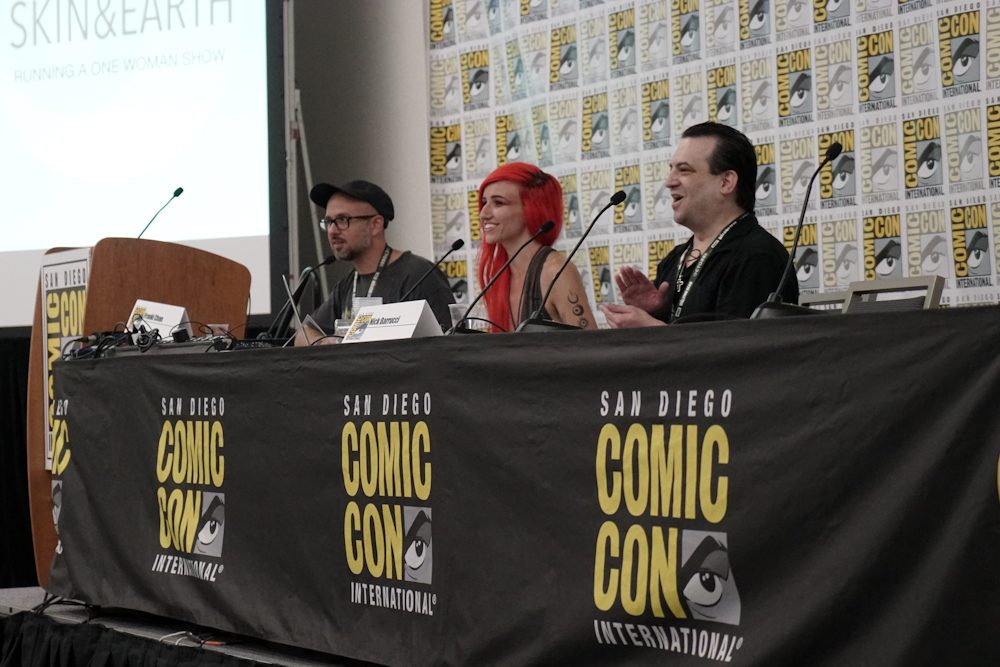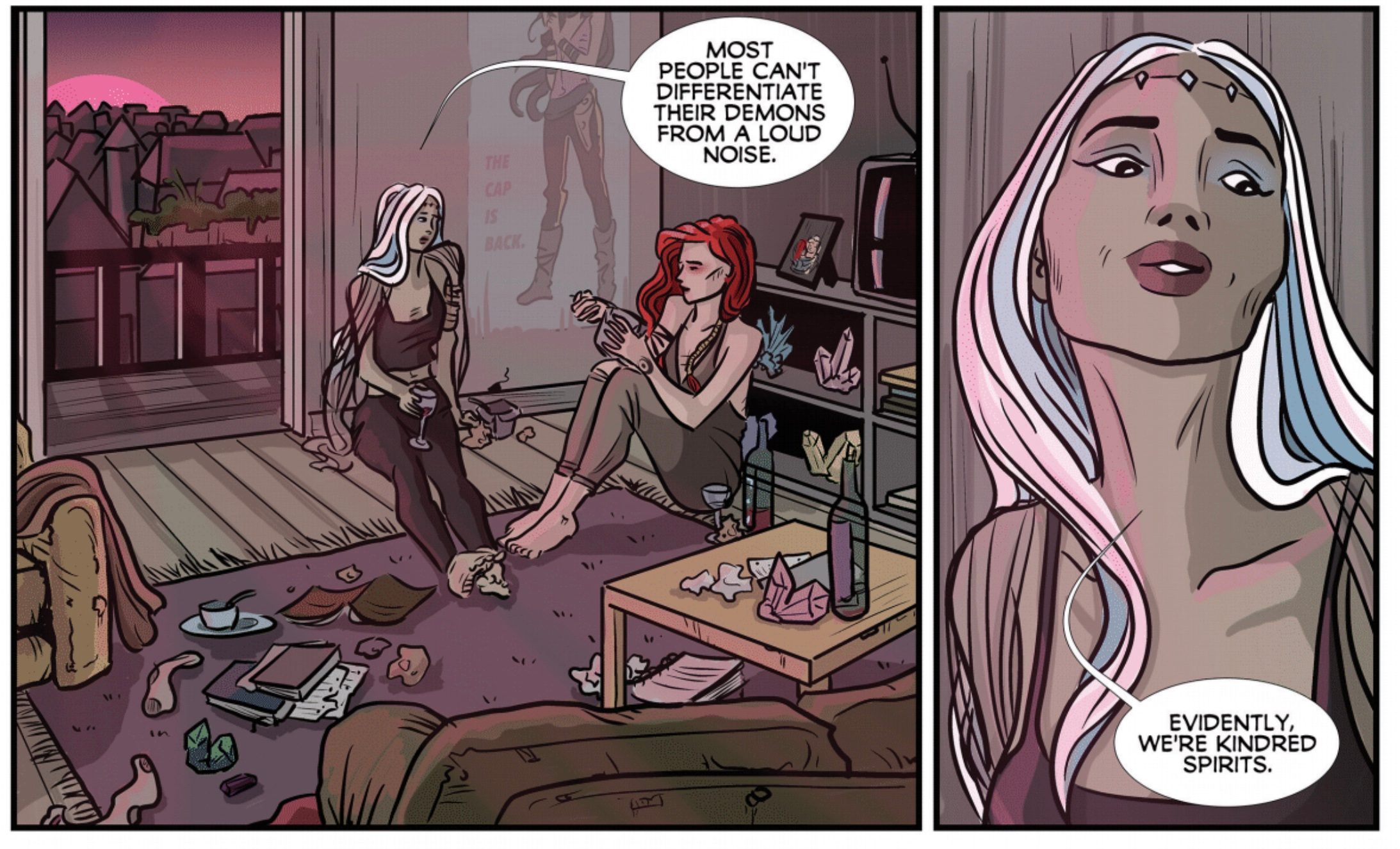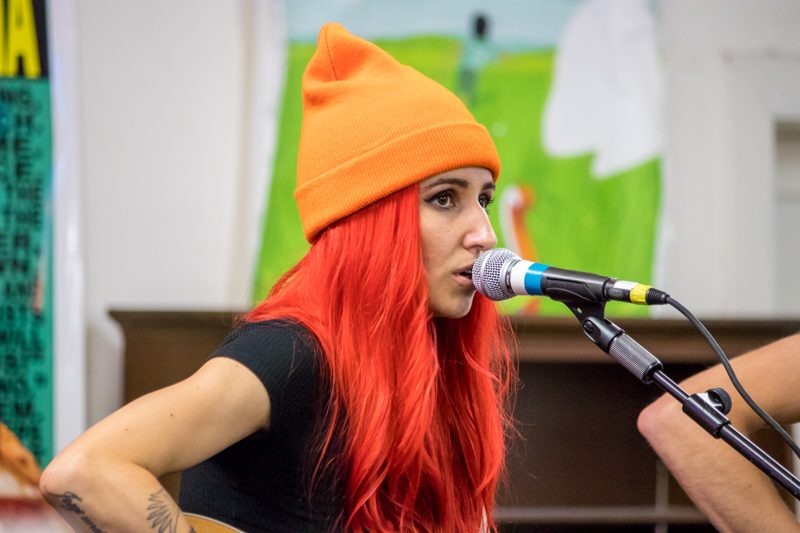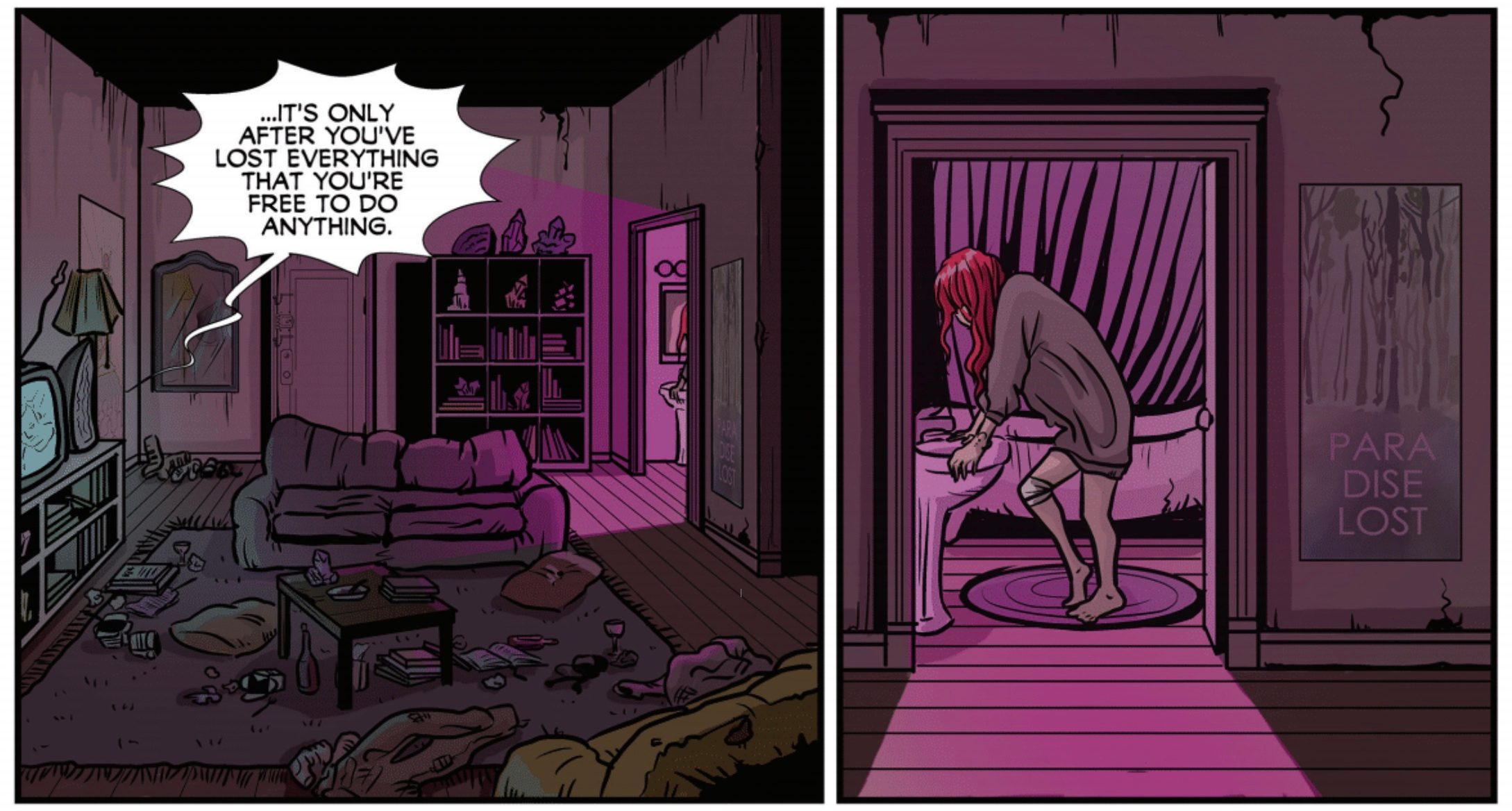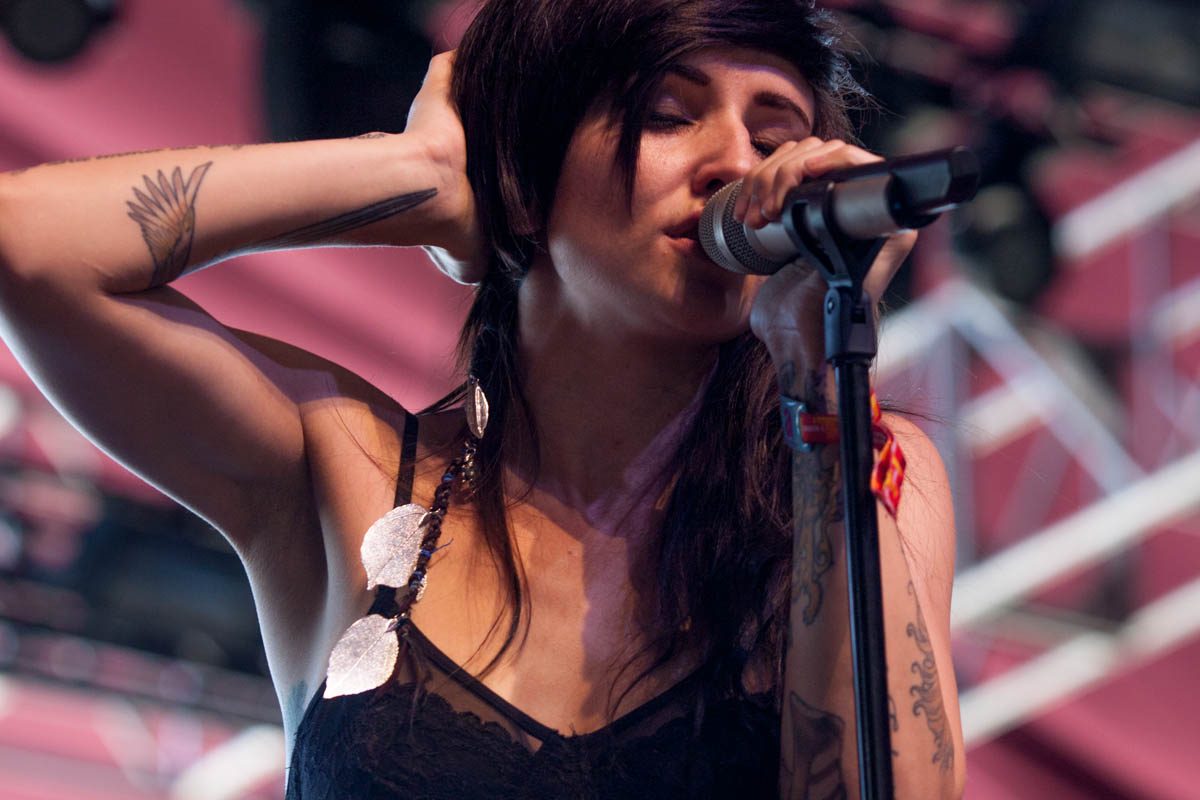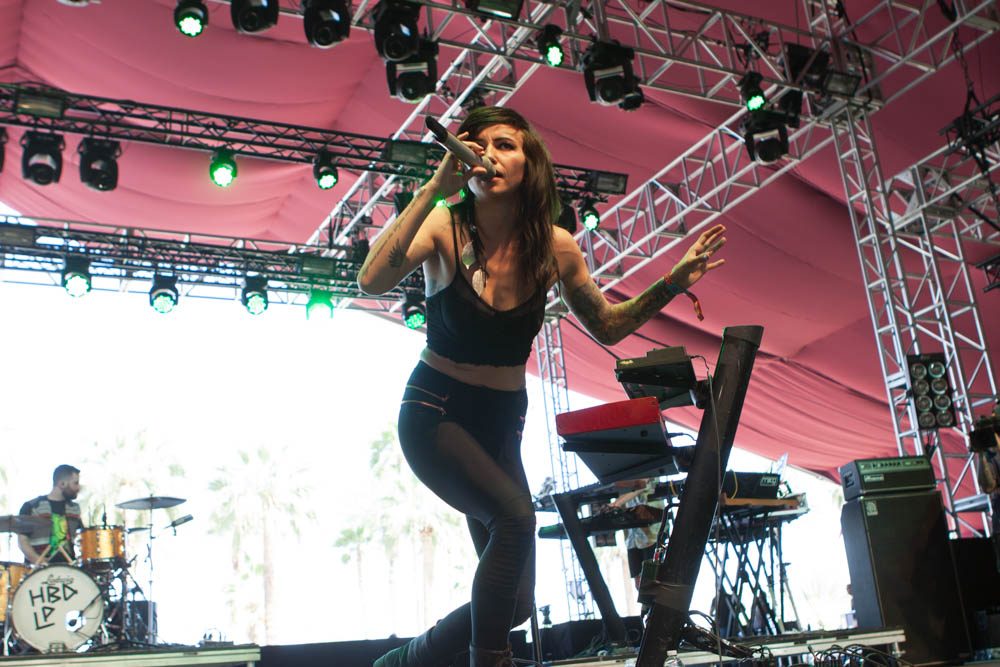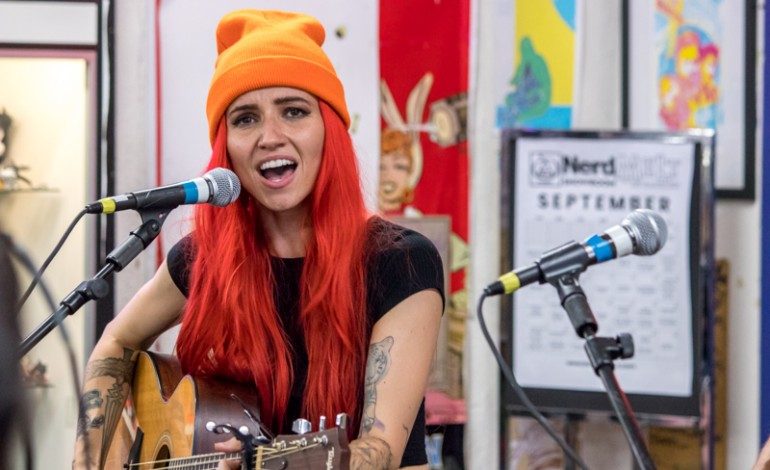

You spend enough years writing about music, interviewing bands and photographing shows, you may find yourself numb and run-down by the trappings of what we call the music business. Journalism—and it being the endless hunt for truth—does not mesh well with an industry hell-bent on obfuscation. Even the simple act of scheduling a brief time to talk to an artist can become a rigorous exercise in torture. Sometimes, even with prime in-person availability with an artist, their answers exhibit an overly calculated attempt to sneak in marketing copy, carefully avoiding anything that could even remotely be construed as controversial or worse yet, anything they just don’t want the public to know. Yes, it can feel futile attempting to bring the truth to light when nobody seems interested in it. Pop singer Lights, whom we have covered regularly at mxdwn since the dawn of her career with the 2008 release simply titled Lights EP, never got the memo apparently.
We spoke with Lights for a jaw-dropping eighty-eight minutes, and she was at all times insightful, honest and pleasant without even a hint of arrogance. While far from an unknown name in the modern music industry, speaking with Lights illuminates her as a personality the music press as a whole has barely looked at past her name, scarcely understanding the thoughtful and jovial presence she radiates. Following the graphic novel release of her comic book companion (with the same name) for her last album Skin&Earth, we spoke to her by phone shortly after she ran a thorough gauntlet of events at San Diego Comic Con.
Editor’s note: as a bonus we have included along with this piece several audio snippets of the larger conversation that was the basis for this interview. If you are interested in hearing more about what Lights thought of each section of the interview press the nearest play button after the paragraph you are interested in.
Late last year Lights released her latest album Skin&Earth via Warner Bros. albeit with a twist: this album would be coupled with the release of a regular comic book series of the same name. Each issue was divided into segments, each of which was written to match the theme and lyrical content of one of the album’s fourteen songs. Even though Lights had dabbled throughout her career for fun on comic book art (herself being a lifelong fan of the medium, her press materials for her first EP were an autobiographical comic of her own making), she threw herself headfirst into fully writing and drawing each and every bit of this six-issue series herself. That’s right—no tracers, no co-writers—Skin&Earth from cell 1 to the final page was all Lights from the ground up. She’s well-documented the process of self-teaching herself to put this together via videos she’s posted online, and fans and comic book legends alike have praised her for such a strong outing never having written and drawn a proper comic prior to this. Record labels often have a pretty standard rollout for albums, teasing a single several months prior, dropping a few key singles on YouTube, then announcing a tour not long thereafter. Things are cookie cutter, to say the least. Knowing how to properly tap into the comic book fan scape is not in their wheelhouse to be sure.
“You have to figure out as you go how to market a thing that’s never really been done and how to do things with a physical and an artistic thing that have never had a textbook created for in terms of marketing it,” says Lights. “That’s why it’s cool to have this graphic novel together because it’s the first time we have a scannable code that really ties the whole thing together.” It’s no wonder it would be a challenge for a mainstream record label to frame this all up. Lights is unabashedly a pop artist. She loves the style and restrictions of making pop music, but the subject matter of Skin&Earth pushes towards hard concepts that top 40 pop artists rarely ever touch. The story is set in a not-too-distant future where the majority of the planet is ruined by pollution. What’s left of society is harshly divided into a caste system of haves and have-nots. The lower class are treated, literally, like disposable fodder. The entire story dives deep into metaphorical themes confronting depression, sexuality and heartbreak. For Lights, the entirety of Skin&Earth was a story about embracing and pushing through depression.
“Part of the struggle with mental health is a.) our denial of it existing, if it’s not [just] to ourselves it’s to other people and b.) the way we frame it as it makes us a less valuable person,” she explains. “I’ve always struggled with that because I think it only compounded those feelings of self-deprecation and those feelings of insecurity, those feelings of darkness. ‘I’m in this alone. I’m worthless because I’m dealing with this.’ I’ve struggled with the fact that [because] you’re dealing with it only makes it worse.” On a societal level, depression and the ability to confront it has never been more in the public eye. There’s a running discord in our society between confronting the heartbreak of seeing the effects of depression on those crippled by it, but also a seeming hesitation society-wide to be honest about how real the problem is, how many are afflicted by it and to not make people feel broken for going through it.
“We don’t look at the common cold, or getting the flu or getting sick like it diminishes our value,” Lights continues. “It’s something we gotta push through. I think mental health needs to be perceived along the lines of physical sickness as much as people like to classify it as something different. It’s our health. We work through it and we become stronger. Our immune system fights it and you become a stronger person for it. I always wanted to view it like that. With the character in this book, she is going into this dark place and she’s coming up stronger for it.” Lights sees Skin&Earth as a narration of confronting these terrible moments and coming out all the better having done it. “This is an origin story about discovering your power, understanding your ability to push through dark times,” she explains. “I have this part in the comic, but we can’t see the light until we reach through the darkness.”
In a story where the main character is at least somewhat based on the author, presenting a narrative like this takes immense courage. Both in the comics and in our discussion, Lights is remarkably open about her past struggles with depression. Most people in the Western world typically are terrified to confront such demons whether it be from fear of looking weak in the public’s eyes or some unfortunate sense of personal shame. For some reason though, Lights does not portray any sense of fear or reluctance when discussing her experiences with it. “Over the years I got into this place of confidence, and let me tell you, it took years,” she says. “When I first would get on stage years ago, I had zero confidence. I was still dealing with so many dark things in my life. I would be like a deer in the headlights. You view the world differently. You view the world like they’re against you. That means you then need to work on it. So now I’m in a place where I know what helps me get out of it, and it is purely having to find that confidence, having to find those things that make you proud. And part of that is art, it may not be the same for everyone…For me, that’s what it was. Now I feel like I’m ready to talk about it. Talk to me five years ago, maybe I wouldn’t be as confident saying that. Now that I feel like I know what got me out of it, I can make my stories and show people that here’s one way to deal with it.”
Part of the public misconception about depression and mental health stems from the belief that suffering with the affliction means you’re permanently broken. It’s a myth of modern culture that it’s impossible to find a way to grow, to learn to live with it, to find some equilibrium in spite of it. For some people, it’s a temporary problem. For others, it will continue even after progress is made. For Lights, this is one step in a long journey towards betterment, but by no means a closed issue. “I would go with let’s say, with a ten-year journey, really only resolving a few years ago,” she says decisively. “Even now, I’m not out of the woods. The bulk of it I feel is behind me… I know that [for] some people it’s a lifelong thing, a lifelong battle. And I know that for different people it isn’t. The problem with that, any feeling, you don’t know which of those it is. When you’re in it, as far as you’re concerned, it’s a lifelong thing.”
The story of Skin&Earth became the vehicle for narrating Lights’ progression through these travails. The main character Enaia Jin’s sudden connection, infatuation and ultimately conflict with the mysterious character she encounters, Mitsuki, is the metaphorical tug of war between these different parts of her personality. “Depression or whatever it may be that’s controlling you at this time, I saw it as a dark lover,” she reflects optimistically. “There’s something comforting about being alone in those times. You want to just dive into your own self pity—I think that’s at least where I was—and that’s where the Mitsuki character came in. She is your ideal. She’s everything you wish you were, but you’re not. So it’s always going to be somebody else.”
Lights (and by extension of that Enaia) find the only way to achieve some degree of balance within this dilemma is by fully submerging yourself in it, allowing one to find even ground with the problem. The confidence Lights alluded to earlier in our discussion was only possible as a result of first being completely lost in the darkness, alone with that embodiment of it. “You go deeper with that person, deeper with that being until you’re in another world,” she continues. “The only way out of that is to overcome and defeat that being. That’s kind of the way the journey was for me. The problem with that journey for me was that I felt like I was the only person in the world who ever dealt with that. I think that’s the thing about mental health is that it makes you feel like you’re alone. Especially with the stigma about mental health, especially with the way that we view it like you’re broken… that makes you feel like you’re the only one dealing with it. But the reality is, you are so not alone in it.”
Right now in North America, unable to escape the effects of Donald Trump’s impact on our daily life, those that are not fans of his scorched earth brand of politics might find this time to be terribly challenging. Those not actively engaged in daily protests or activism may feel resolutely helpless. Lights finds this challenge emblematic of a personal struggle with mental health. “We have to realize that as individuals we have a lot of power to affect the world around us,” says Lights. “I think we underestimate our power as individuals when we feel overpowered by a group of villains. That’s a great metaphor for mental health as it is. It completely strips you of any power you have to be strong. We have to change our perspective on it. Despite our leaders letting us down, there’s a lot we can do to right the wrongs. Especially the wrongs that are being aired out and made visible today.”
The legendary film Fight Club is a big influence on Lights, and she proudly expresses its influences on her work. Careful readers of Skin&Earth will notice buried in one panel a TV screen emitting a slightly altered version of the famous words, “It’s only after we’ve lost everything that we’re free to do anything.” Like Lights’ comic story, Fight Club is a dark journey in duality, and more importantly an exploration of how much one truly knows about their own impulses. “I find art so fascinating because if it’s not inspiring you to be better, if it’s not inspiring to dig deeper or be an artist or try things, it should just be taking you away,” she muses pleasantly. “It’s taking you away on a little vacation, on a little escape. If you’re not getting one, you’re getting both of those things out of it.”
Having found success in the world of comic books—itself an insular and hard to penetrate business—is this the beginning of Lights doing comics instead of music? Does she continue to just do albums in the conventional sense, or does she plan to do subsequent albums always being created with comics intertwined going forward? “I think it’s a bit of all of the above,” she states after a brief pause. “I think gaining my confidence over the years has allowed me to feel comfortable putting art out there and seeing the great response on this project and the amount of work that I put into this project and seeing that it actually affected people.” This is not merely a one-time companion project for Lights. She’s interested in taking this success and going even further into different mediums. “So being able to put out an entirely other art form and being able to mesh it with my own and be accepted for it was actually encouraging,” she states. “So I think it only opens further the floodgates for me wanting to do that. Whether it’s album comic tie-ins or branching out to do those things separately—or even hell—trying a different art form. I’m encouraged and inspired right now.”
She makes no bones that these first six issues of Skin&Earth are by no means the end of Enaia Jin’s story though. “I think the story of Skin&Earth is just beginning, so there will be a lot more to come,” she says confidently. She humorously adds, “I mean Gail Simone tweeted me today, ‘I’m waiting on that Skin&Earth / Red Sonja crossover,’ and I was like, ‘Hell yes! Count me in.’” Chief among characters not created by Lights she would like to try creating for someday is one legendary Avengers member. “My dream book to write, do art for would be the Scarlet Witch,” she says. “If they ever did another run of Scarlet Witch where it was like a variety of different artists doing each issue, I would love to try something like that. Diving into another title head on, I’d probably be like, ‘Eh, I don’t have time for something like that right now,’ because it’s a lot of work. I hope I get to do something like that in the future because that was really cool to read.”
Things have changed tremendously in the music business in the ten years since Lights came on the worldwide scene in 2008 with Lights EP. While many would bemoan the current state of the music business, Lights sees it in a more optimistic way. “The bulk of where it changed is money,” says Lights. “People are no less interested in music now than they were. In fact, I think they are more interested in music now. The only difference is the amount of money you make from it.” For her, paths to easy monetization are not the largest concern. The ease for artists to get their music out far outweighs the difficulties of profit making. “The space for artists is getting bigger, and while it makes the money less, more people can realize their dreams of making music,” she explains. “More people can be artists. More people can find something special and put it out there for the world. I think it’s better for art.”
She expands on this, in how it used to be that a band or artist needed to be “discovered” and signed a major label, whereas now all that’s needed is the desire to create and distribute through the Internet. “Now, I literally think go to the app store, buy Logic, start producing, put it on the Internet,” she says. “Everything’s in front of you, everything you want. You could be an artist today if you always wanted that. Twenty years ago you couldn’t. I think the world is getting better for art, and while it may not be sorted out financially yet, I think eventually it will be there.” This abundance of access felt like the best time to endeavor to provide her music with a greater context beyond the conventional album release approach. “The reality is people care about art and they’re interested and they’re ready to discover,” she continues. “They’re ready to take in more art and that’s why I thought this was a good time to do this project: to tie in different mediums and give these songs some staying power and some extra meaning in a world where there is so much of it now. Have fun with it. I think people want to see art and artists be creative and do great things.”
Having now distributed four complete studio albums using varying inflections of the pop format, she sees the genre as a chance to incorporate different ideas. She has experimented with different styles of music in her own time but plans to continue mining nuggets of pop gold as long as she can. “There are times where I flirt with the idea of just doing something crazy experimental, and I dabble with that just on a personal level,” she ponders. “I don’t think there’s a point of doing something that’s unique just for the sake of doing something unique. I’ve always had an understanding of what pop music is.” She loves the challenge of creating within the limitations pop music requires. “I love making pop songs and working within the boundaries of creating pop songs and making something unique within that,” she says. “Who knows? I can’t speak for future Lights because she could be a little crazier than I am now. I don’t think I’m going to just be like, ‘Fuck it! I’m going to make a metal record.’ I’d probably do a side project if I was going to do that. I know what I’m good at and working within those boundaries of achieving these songs that I think a lot of people can identify with.”
The song “Savage” for example, she counts as being directly influenced by Rage Against the Machine. “What I loved about Rage was that they had very simple, one-stringed riffs. You line the bass up with it and you have something very powerful. So I channeled that influence into the song “Savage” on this record… so while I’m not going to go up there and go, ‘I’m going to make a metal record,’ I can take the things I love about metal and bring them into my world.” Interestingly, prior to her love affair with pop music, when she was a teenager she was in a metal band called Shovel Face. “I’m glad none of the evidence exists,” she admits. When probed on whether we will ever get to hear some of that material, she says with a laugh, “You’re never going to.”
She also feels on a broader level that the current pop music landscape is pulling its weight when factored against the grand history of the medium over the last 70 years. She puts it philosophically as being a reflection of where society as a whole is at a current point. “I was reading a big piece on what pop music does and why it is what it is, and how it ebbs and flows with the economy of a country, the political state of a country,” she explains. “It has a lot more to do with that than you think. At times of a country thriving, people want sad songs. In times of repression and hard political times and hard financial times, people want happy songs. People want to be able to forget about it. I always found that really fascinating because people want to feel. They want to be able to connect to things. They don’t want to have to overthink connecting to things. They just want to be able to turn it on and for it to give them the feeling they want, and that’s always been pop music’s approach.”
For Lights, pop music’s bad reputation is a by-product of the industry’s commodification of the art form. “I think where it’s gotten its bad wrap over the years is the fact that it’s been turned into a factory of sorts,” says Lights. “It’s a self-perpetuating, moneymaking industry because they know how to achieve this. So they bring in teams of professionals to make this happen.” But ultimately, she finds today’s climate to be as high quality as any period in her lifetime. “I think pop music is in a better place now than it was five years ago,” she states. “I’d turn on the radio five years ago and it just wasn’t what I wanted to hear to inspire me. Now there’s so many interesting production ideas, interesting lyrics, vocal styles. I think it’s more broad and vast bringing in different genres fusing those together to make great pop music that’s on the radio. I think pop is better now than it’s ever been, and I think I’m a little closer to pop know than I’ve ever been.”
Now having successfully merged two of her major passions in the joint album/comic book of Skin&Earth, she’s eager to work on a follow-up. She reveals that she’s already at work writing it. “I’m so invested in the characters and the world. I do feel like it’s just beginning,” she says. She doesn’t give much in the way of details, but she does happily point out, “There’s a lot more to come with that.”
As we wrap up with Lights, we ask her directly about the path of societal and cultural change. Skin&Earth boldly tackles subjects at the forefront of progressive society’s quest for inclusion, representation and equality. On a surface level, North America has never been more polarized between whether things should continue on that progressive path or whether those changes to society should be unwound. While many in the left-wing world believe wholeheartedly in the path of change and progress, an almost equal portion of society wants to do everything in their power to roll things back to the way it used to be. Making such a bold statement that assumes all forward fronts are on the right side of history, we ask her to speculate on how things will go from here, society seemingly gripped in the throes of a difficult tug-of-war.
“100%, it’s going forward,” she indicates without hesitation. “Regardless of people stuck in another era’s cries of dismay. They’re going to be left behind. The reality is, the world is achingly getting better one step at a time. I think it’s bringing the naysayers out of the woodwork for one last hurrah before they get left in the dust.” For her, artistic expression as a whole is going to be what pulls society through this dilemma. “Comics, music, people who are guiding the younger generation in terms of their moralities and beliefs, that’s leading the charge on changing things,” she says. “That’s why we see it prevalent in comics now where we wouldn’t have years ago. The reality of this all is, the people who are the naysayers of forward motion should be disallowed to have an opinion on something that isn’t them, that isn’t what they think. Let’s talk about the LGBTQ community. If someone’s against someone being gay…. It drives me crazy. I have this conversation a lot. You cannot have an opinion on who someone else gets to love. You aren’t allowed. Doesn’t mean you have to be gay, but you can’t have an opinion on it. It’s not opinion on it. It’s just love.”
For those music fans that enjoy pop music when it is not merely thoughtless hooks and over-hyped personalities, Lights has found a way to strike the sweet spot. She is the rare breed of creator determined to make music that delights and is infectious, but not at the expense of telling a real story. She has magnificently found a balance between an awareness of society’s darkest, most ignored issues while creating a whole new avenue of expression for her career. This new beginning will become a bright extension of what Lights is capable of, and is an evolution that all serious music fans should take note of. Lights’ album Skin&Earth and its comic book (and graphic novel companion) are available everywhere now.
Orange hat Lights photos by Mauricio Alvarado
Coachella Lights photos by Owen Ela
San Diego Comic Con Lights photos by Raymond Flotat
Comic book panels from Skin&Earth written and illustrated by Lights

